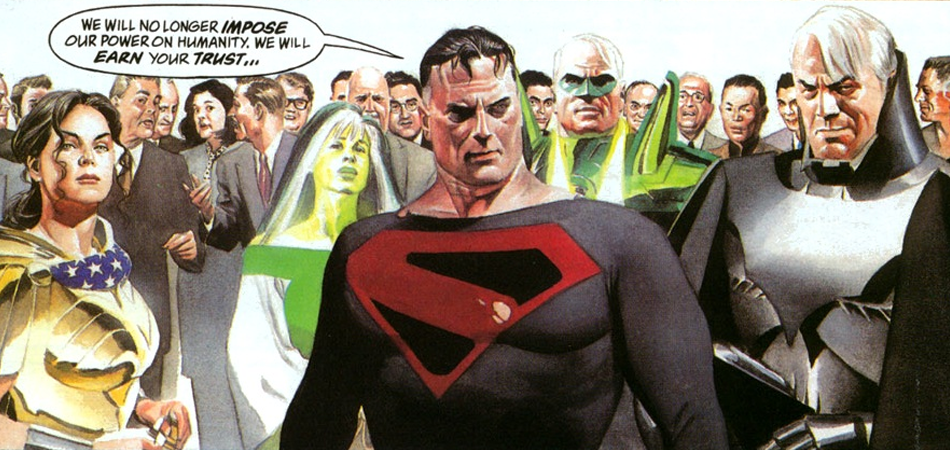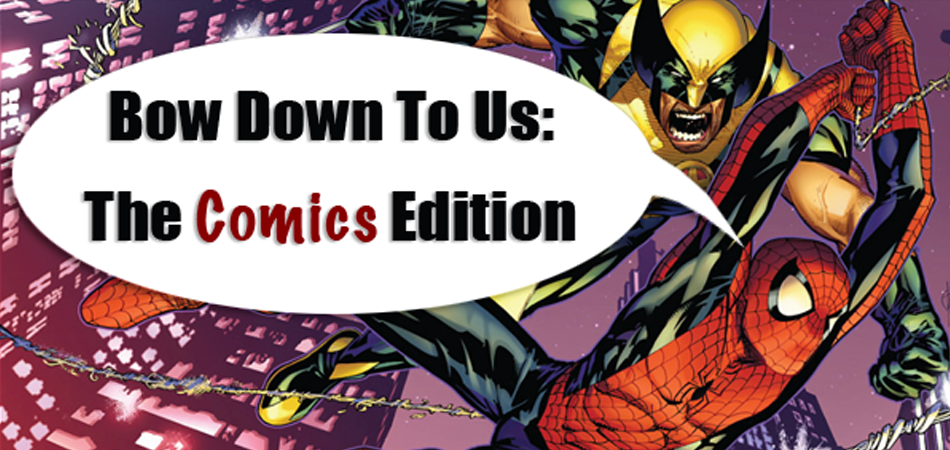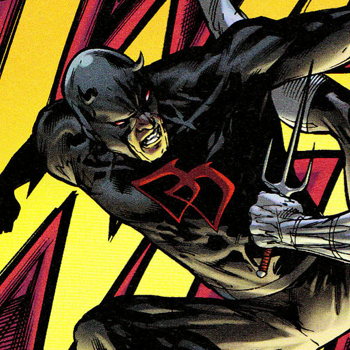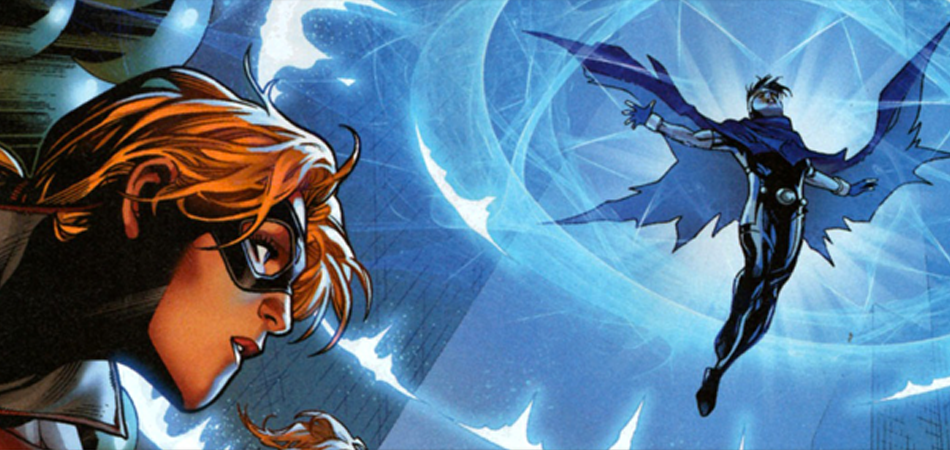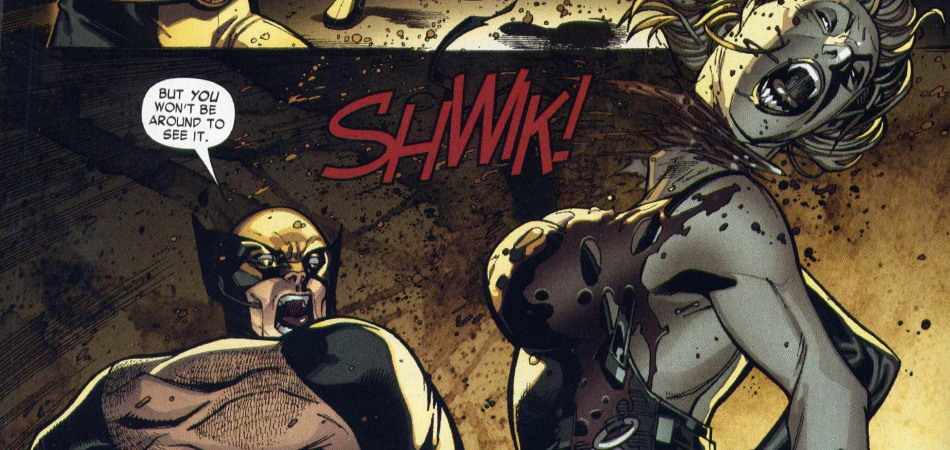Comics get a bad rap. I find it interesting that people who play video games, long considered a “kids” hobby, will discount comics as being immature. Proponents of traditional books find the medium completely without merit. That’s not how things work here at BDTU. Each work should be judged on its own merit. Personally, I’ll go anywhere for a story, and as a medium, comics can deliver a story that no other format can. In a novel, some details or events take paragraphs, even pages to describe. In a comic, you can just show it and move on. In a video game, interactivity is a concern. The gameplay has to drive the narrative, and vice versa. That’s not to say it doesn’t work in many instances, but it’s easier for the story to be the focus of a comic. As long as the art is pleasing to the eye, you can focus on the story. Movies and television are dependent on actors to deliver the performances and special effects to drive home the action. Without a prohibitive budget, many comic stories just couldn’t be done on the screen. So, now that we’ve established comics as a valuable storytelling medium, it’s time to take a look at some of the actual stories. I’ve assembled five stories that I feel are the best they have to offer. There are spoilers involved here, but for stories of this caliber, if anything, it will make you want to read them more. The Dark Phoenix Saga Uncanny X-Men 129-137 (January-September 1980) Chris Claremont & John Byrne Growing up, Uncanny X-Men was without a doubt my favorite book to read. So many heroes have a complex origin, being aliens or bitten by radioactive animals. The X-Men were just born that way. For the first time, a hero didn’t need special circumstances to be “special.” It’s a theme that really resonated with me as a kid. When it comes to the X-Men, the discussion pretty much starts and ends with Chris Claremont. Stan Lee may have created the team, but Claremont is the one that really developed the characters. Before Claremont took over, the book was failing, it had been publishing reprints for years. Look at it now, it’s one of the most popular titles in Marvel’s library. Much of that success can be attributed to the amazing success of Claremont’s first major story arc, “The Dark Phoenix Saga.” Jean Grey, one of the original X-Men, had become host of the super-powerful cosmic entity known as the Phoenix Force. As Phoenix, Grey had near limitless power, but her personality was becoming increasingly fragile. This made her a target for the Hellfire Club, a corrupt group of the world’s social elite. The Inner Circle of the Club used mind control to trap Grey in a hallucination, making her believe she was their Black Queen, and allowing the Phoenix Force to grow corrupt. Enter the X-Men. They raid the Hellfire Club and are… soundly defeated. All would have been lost if not for the rise of Wolverine. You see, prior to this point, Wolverine was nowhere near the sensation he is today. In fact, the fans HATED him. The only purpose he served on the team was as an antagonist, constantly causing friction within the team. When the X-Men were defeated by the Hellfire Club, Wolverine was supposed to die. John Byrne, the artist for Uncanny, a Canadian (nobody’s perfect), refused to let the one high-profile Canadian superhero die, and asked Claremont to give Wolverine one more chance. And so, Wolverine was unleashed. Wolverine finally had his heroic moment, tearing through the Hellfire Club, unleashing the berserker rage that’s made him so famous, all in an effort to save his captured teammates. He would be too late for a total victory. During the rescue attempt, Cyclops was engaged in a psychic duel with Jean’s captor. In the psychic plane, with Jean watching, Cyclops was killed. Jean snapped, breaking the illusion and fully unleashing the Phoenix Force. Unfortunately, the completely unrestrained entity could not be controlled. Corrupted by the Hellfire Club’s influence, the Phoenix Force craved more power. It took control of Jean’s body, becoming the Dark Phoenix. And that’s only HALF the story. Out of control, the Dark Phoenix threatens all life in the universe. After multiple attempts to stop it, only a heroic sacrifice would bring the nightmare to an end. Watchmen Watchmen 1-12 (September 1986-October 1987) Alan Moore & Dave Gibbons No book in the history of comics is more influential that Watchmen. Countless writers have attempted to recreate Alan Moore’s masterpiece, and none have come close. The sheer amount of planning, thought and detail that went into this book is staggering. I’ve read through it a half dozen times, and I still find hidden clues and foreshadowing that I missed previously. Moore and Gibbons meticulously plotted out every aspect of Watchmen in advance. The story is solid, following the lives of a small group of costumed heroes. Nite Owl, Silk Spectre and their compatriots have had their time, but have since been outlawed by the government. Many of them happily live out their live in retirement until an unknown enemy starts coming after them. What follows is a thrilling mystery that slowly uncovers a conspiracy to destroy the world. Or is it to save the world? Watchmen has so many well-done plot twists, it will always keep you guessing. “I did it thirty-five minutes ago,” has to be one of the best lines ever. Watchmen is so much more than a simple story, though. There are so many elements that set it apart from just about everything else. First of all, there’s the setting. Most comics from Marvel, DC and other companies claim to take place in our world, or at least one much like it. However, Watchmen is the first to actually feel like a REAL world. How would normal people react when faced with a being of unimaginable power? Would they cheer him on, or live in fear? What exactly causes someone to dress up in a funny outfit and fight crime in the first place? In the end, did these people cause more harm than good? These are all subjects that Watchmen explores. Of course, there’s the aforementioned attention to detail. Upon a second reading, knowing the secret identity of Rorshach, it’s enlightening to see him working behind the scenes. Seemingly insignificant panels of the story suddenly gain new meaning. Once you know who’s behind the conspiracy, it’s truly fun to see just how far-reaching their influence is in every aspect of the story. Then, there’s the seemingly impossible. Issue 5 is titled “Fearful Symmetry,” and it’s not just a name. The entire issue really is symmetrical. Open the book to the center spread and you’re treated to a near-mirror image. Each page and panel from there outwards is a mirror image to its counterpart, if not visually then at least thematically. One often overlooked feature is the “Black Freighter.” Two minor characters, a newsstand owner and his friend serve as the audience’s tie to the fantasy world of Watchmen. The offer commentary on the events from a normal person’s perspective. One of the characters is reading a comic book called Tales of the Black Freighter. In a world where superheroes actually exist, pirates are the stars of their comics. Parts of Black Freighter are actually intertwined with Watchmen, and the story of its main character parallels the story of one of the main heroes in the larger plot. All these reasons and more are why Watchmen is held in such high regard. The actual story itself may be merely “good,” but the way it’s told, with all these elements coming together are what makes it “great.” Kraven’s Last Hunt Web of Spider-Man 31 & 32, Amazing Spider-Man 293 & 294, Peter Parker, Spectacular Spider-Man 131 & 132 (October-November 1987) J.M. DeMatteis & Mike Zeck Throughout his history, Spider-Man has always been a fun character. Over the years, many attempts have been made to tell more mature stories and many of them have failed. “Kraven’s Last Hunt” is one of the few that got it right. Sergei Kravinoff, aka Kraven the Hunter, was one of Spidey’s oldest villains, though not one of his more successful ones. Unconcerned with robbing banks or any of the usual mundane supervillain fair, Kraven only wanted one thing: to hunt and kill the greatest prey, Spider-Man. Defeated time and again, Kraven formulates a plan for one last hunt. With his powers and his sanity waning, Kraven catches Spidey by surprise by using a new tactic: a gun. Always claiming to be a true hunter, using only his hands and a knife, the fact that Kraven would resort to a rifle, casting aside his own ideals, shows just how far gone the villain truly is. Thinking Spider-Man dead, he buries the body. Then, things get very interesting. While the surface story is plenty good in its own right, “Kraven’s Last Hunt” takes things even deeper. It delves into the psyche of Kraven. Kraven doesn’t fear Spider-Man, but he does fear “The Spider,” the ideals that Spider-Man represents to him. He fears the fall of his homeland, Russia, and American dominance in the global stage. He fears that he’s a relic of a bygone era in a modern world. Defeating Spider-Man himself wouldn’t be enough. Kraven had to defeat the IDEA of Spider-Man, so he starts wearing Spidey’s costume, out to ruin his reputation. Thankfully not dead, Spider-Man returns to stop Kraven. Kraven, finally content that he has conquered “The Spider,” takes his own life. The remainder of the story involves Spider-Man facing his own fears, his fear of mortality, his fear of leaving those he loves behind. Thankfully, Spidey has something in his life that Kraven did not: a reason to keep living, a reason to keep fighting, a reason to not be afraid. Though now called “Kraven’s Last Hunt” this story was originally titled “Fearful Symmetry,” as it showed just how much Spider-Man and Kraven have in common, and how easy it would be for the former to follow the latter down the dark path. The title was likely changed to avoid confusion with the recent Watchmen issue by the same name. The Killing Joke Batman: The Killing Joke Graphic Novel (March 1988) Alan Moore & Brian Bolland Yep, Alan Moore is on this list twice. Frank Miller’s recent hit, “Batman: Year One” was a re-telling of the origins of Batman. “The Killing Joke” was Moore’s attempt at telling the Joker’s origin story. Though, it’s told from the memory of the madman himself, and the truth is questionable. As Joker himself states in reference to his story, “Sometimes I remember it one way, sometimes another… if I’m going to have a past, I prefer it to be multiple choice!” The flashbacks do serve an important purpose. Way back when, Joker was just an ordinary guy. He fell on some hard times and found himself indebted to a group of criminals. He is forced to help them break into the chemical storage facility he works at, and things go horribly awry. The point that Joker makes is that a normal person, under extraordinary circumstances can become “evil” because of one bad day. The Joker chooses a test subject, Commisioner Gordon, and does everything in his power to give Gordon his “one bad day.” He shows up at his house and shoots the Commisioner’s daughter, Barbara, the former Batgirl. While his henchmen take care of the Comissioner, Joker focuses on the helpless Barbara. Later, Gordon wakes up in an amusement park, naked and tied to a roller coaster. The ride starts and Gordon is shown pictures of his daughter, bleeding and paralyzed, at the mercy of Joker. It’s never stated what happens in those pictures, but the implications are horrible enough. Before Gordon can completely break, Batman shows up, but it’s a close call. He chases Joker and the villain has a revelation. Batman, himself, had “one bad day.” Why else would he do what he does? Even Batman comes to realize just how similar he is to his nemesis. Gifted & Unstoppable “Gifted:” Astonishing X-Men 1-6 (July-December 2004) “Unstoppable:” Astonishing X-Men 19-24 & Giant-Size Astonishing X-Men 1 (February 2007-March 2008) Joss Whedon & John Cassady These are technically two separate story arcs, but they tie together into one amazing story. Joss Whedon’s award-winning run on Astonishing X-Men starts with “Gifted.” It starts with two seemingly unconnected events: the arrival of a hostile alien and the invention of a mutant “cure.” The X-Men soon find the connection between the two. The alien, Ord, came to Earth to put an end to mutants, as a prophecy declares that one of them will destroy his planet. He has been abducting mutants to perform tests, trying to find a way to stop this from happening. One of the mutants he’s holding prisoner is quite a surprise. Several years after his emotional death, Colossus finally returns to the X-Men, in one of the biggest “HELL YEAH” moments I’ve ever read. Whedon finishes his run with “Unstoppable,” which manages to be even better than “Gifted.” The reason Colossus was chosen as one of the test subjects by Ord is he’s the mutant specifically referenced in the prophecy. So, a branch of the government that deals with extraterrestrial threats takes the X-Men to Ord’s planet, Breakworld, to fulfill that prophecy. Vastly outnumbered, the X-Men keep fighting, looking for a way out of their predestined fates. When the story reaches its conclusion, the X-Men have come to accept their lots in life. De-powered, Cyclops finally develops into the leader he’s be trained to be his whole life. Beast finally comes to terms with his appearance, finding someone willing to accept him for who he is. Wolverine regains a bit of his humanity through his interactions with a new protege. Best of all, Colossus and Kitty finally reach the culmination of their on-again-off-again romance spanning decades of comics. This is what separates Astonishing X-Men from other books. The story is good, the story is important, but never more important than the characters involved in it. Whedon is more than happy to stop the overall plot development, even if only for a panel or two, to give the X-Men these series of great moments. That’s what I will always remember Astonishing for, those moments when the characters I’ve loved nearly my entire life fulfill every aspect of their personalities. Reading the last pages of the Giant-Size special, a grown man, reading a freaking COMIC BOOK, I got a little choked up at a heartbreaking moment. I was emotionally invested in the story, I can give no book higher praise than that....
